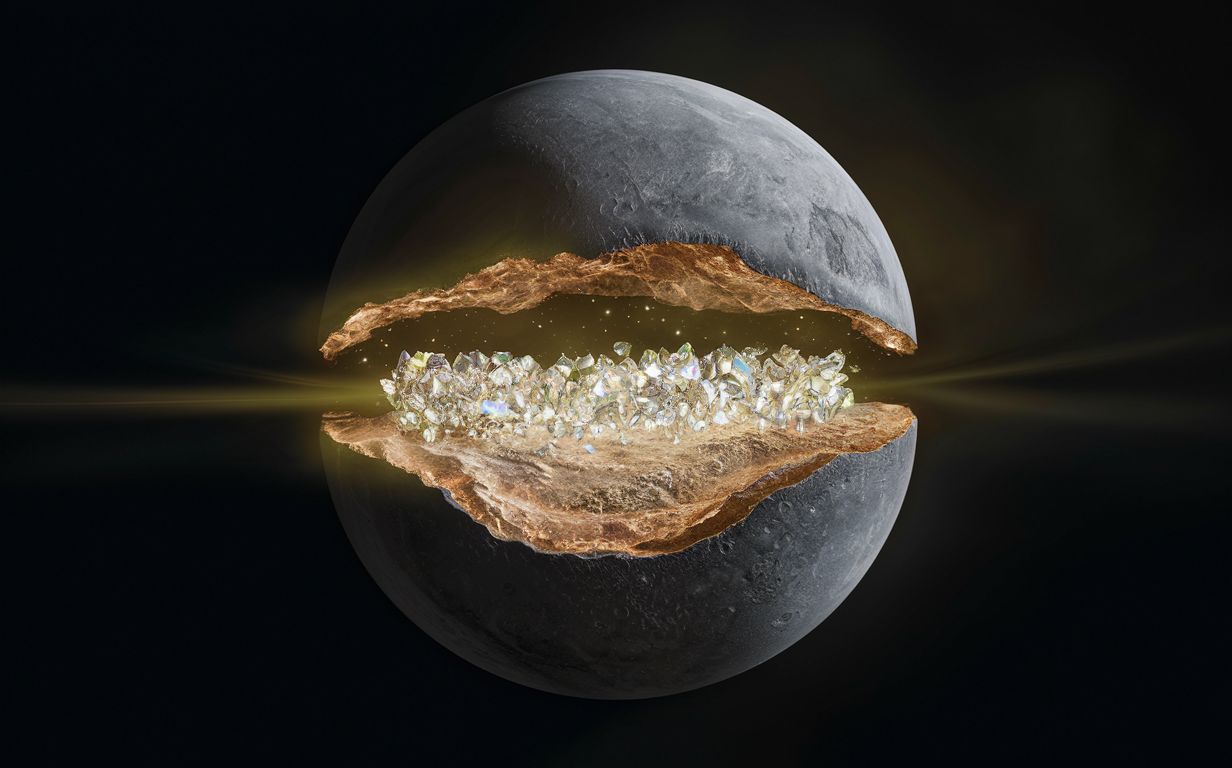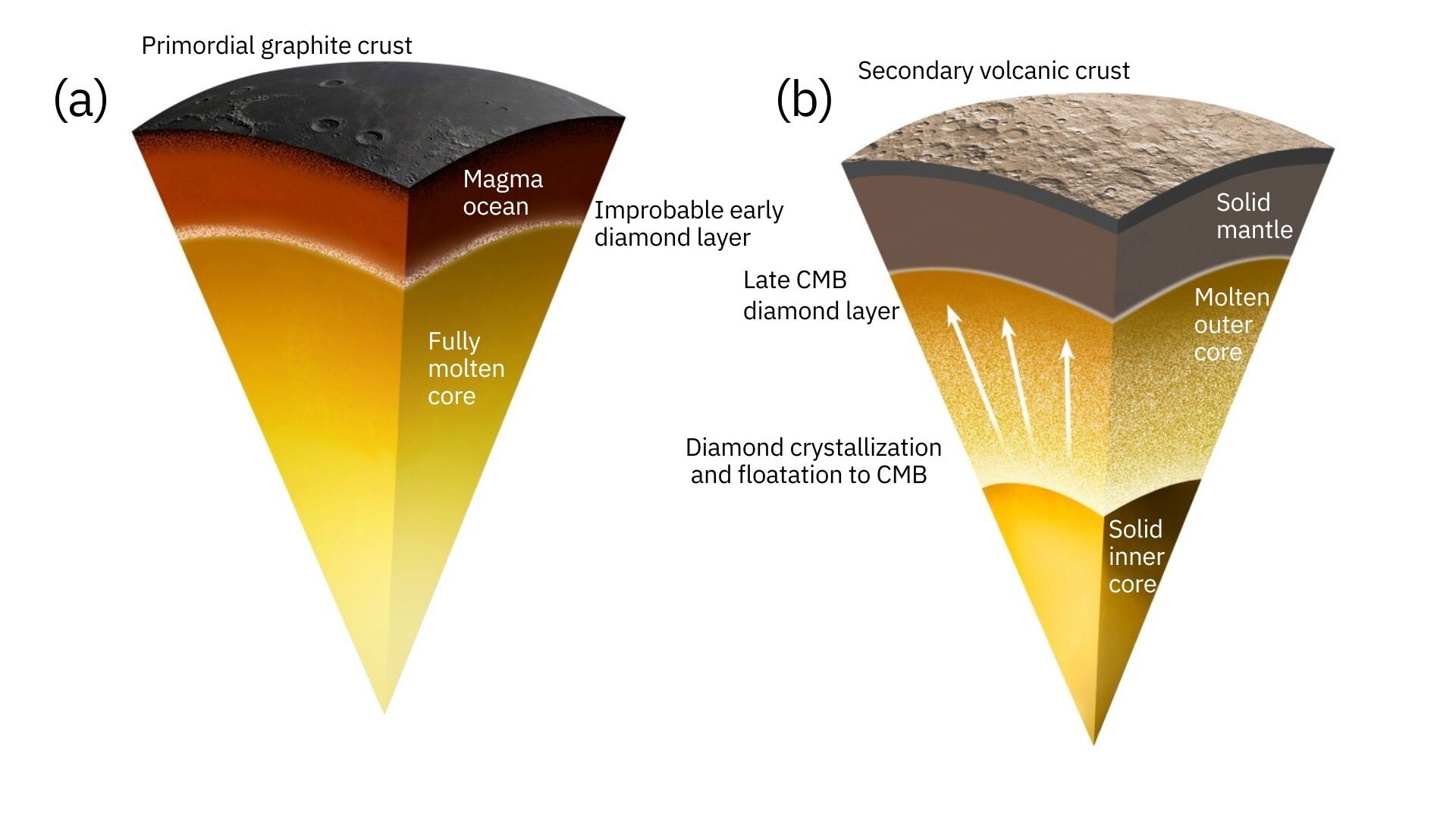Under Mercury's surface, a layer of diamonds 11 miles thick
Follow us on Google News (click on ☆)
This discovery could change our understanding of the planet closest to the Sun. Scientists have examined Mercury's internal composition, suggesting that extreme conditions may have favored diamond formation at the core-mantle boundary.

Mercury, known for its dark surface and dense core, is full of mysteries. Past missions, such as NASA's MESSENGER, revealed an abundance of graphite on its surface, hinting at a carbon-rich past. These observations have prompted researchers to delve into the planet's volcanic history.
Researchers in China and Belgium used high-pressure experiments and thermodynamic modeling to simulate Mercury's internal conditions. Dr. Yanhao Lin explains that high pressure and temperature highlighted diamond formation from graphite in conditions similar to those of Mercury.
Their work suggests that the graphite on Mercury's surface could have originated from a carbon-rich magma ocean that solidified, forming a graphite crust. However, conditions at the core-mantle boundary are extreme enough to transform graphite into diamond, resulting in a layer up to 11 miles (18 kilometers) thick.
This discovery has implications for understanding Mercury's magnetic field, which is particularly strong for a planet of its size. The formation of diamonds could influence thermal dynamics and convection in the planet's liquid core, thus impacting the generation of the magnetic field.

Proposed scenario for diamond formation at Mercury's core-mantle boundary.
(a) Crystallization of the carbon-saturated magma ocean and potential diamond production at its base.
(b) Crystallization of the inner core and diamond exsolution at the core-mantle boundary.
Credit: Dr. Yanhao Lin and Dr. Bernard Charlier.
Finally, this study opens interesting perspectives for carbon-rich exoplanetary systems. The diamond formation processes on Mercury could also occur on other planets, offering new avenues for space exploration and the search for similar planets.